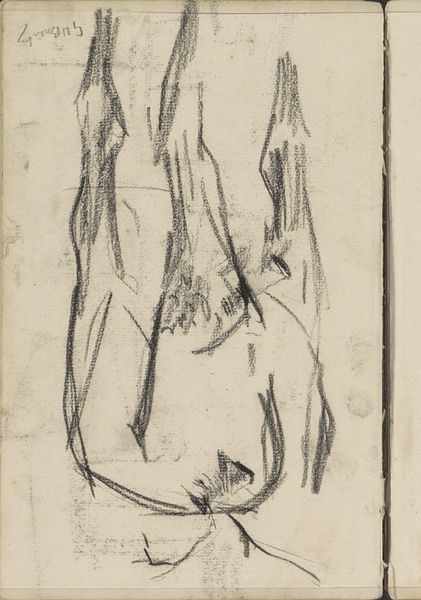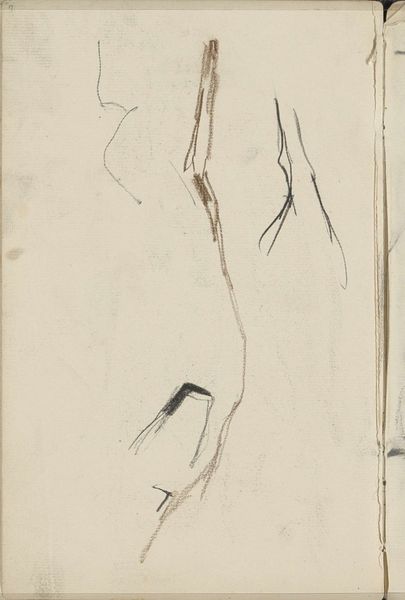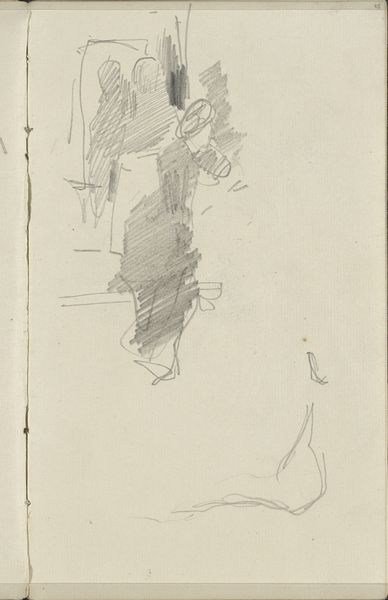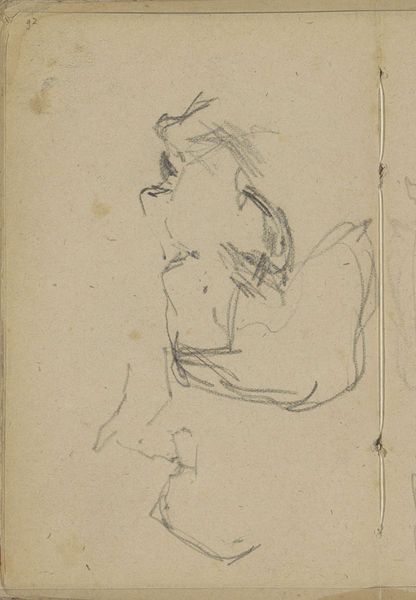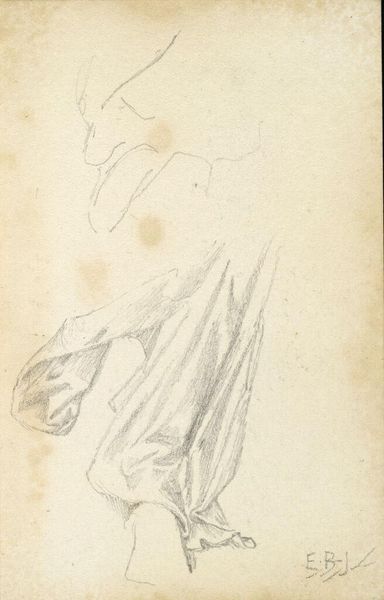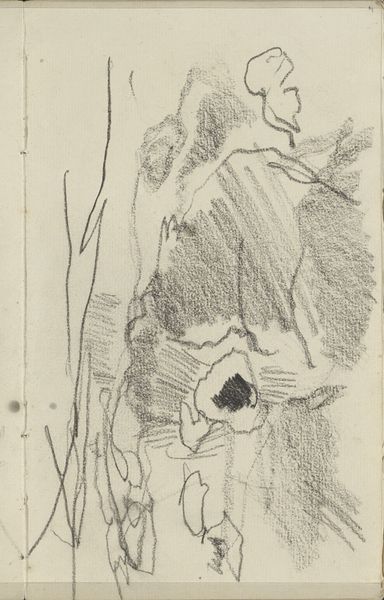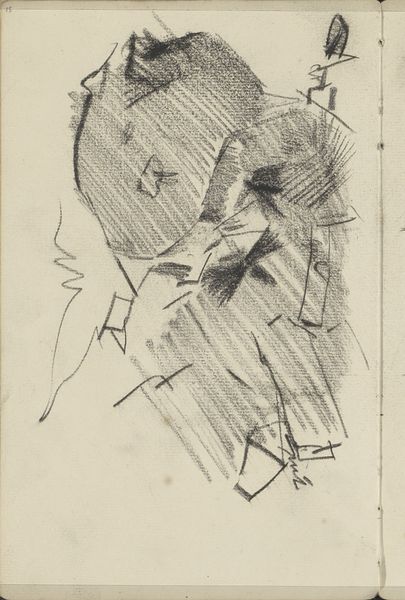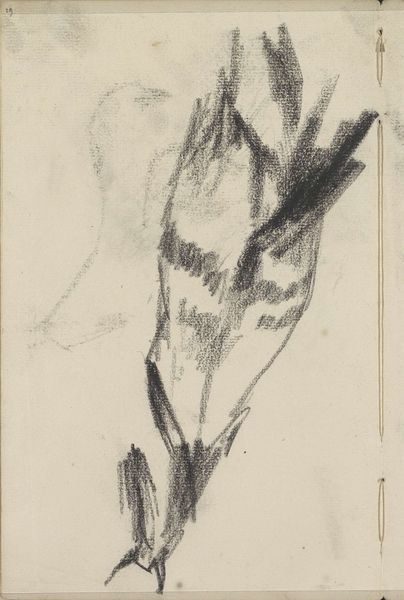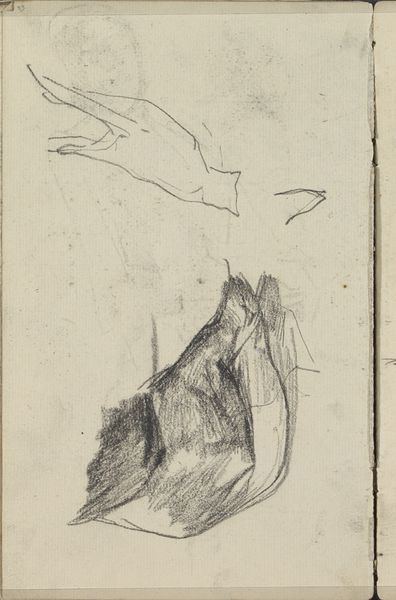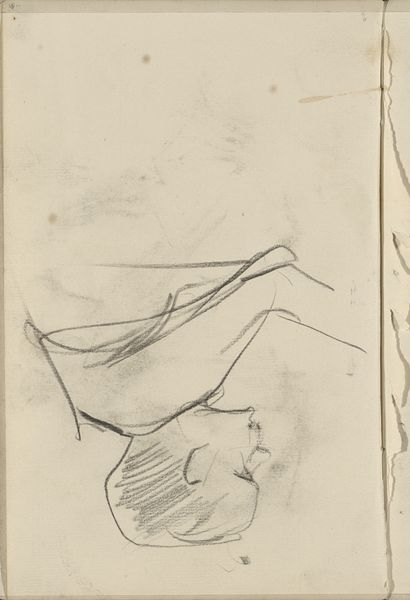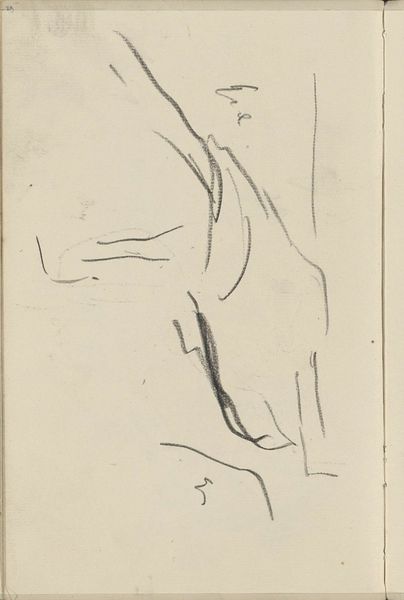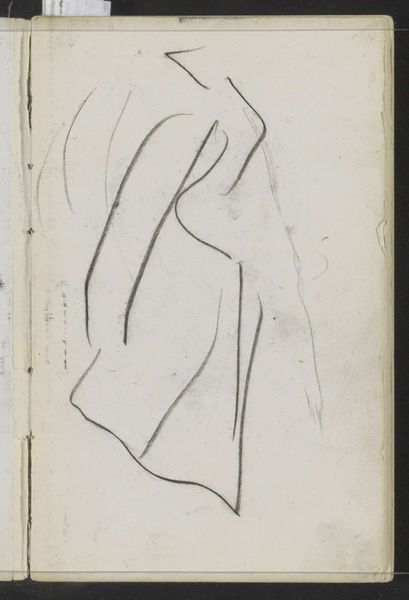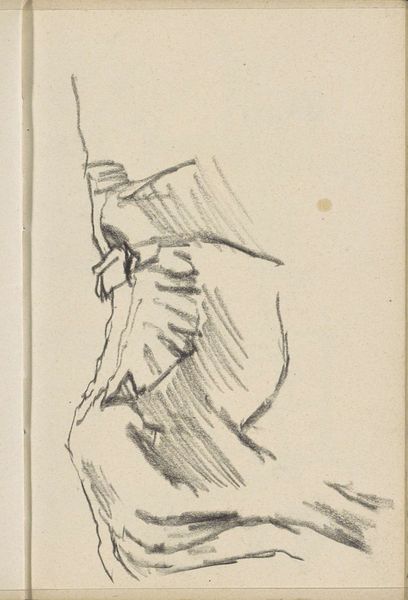
drawing, pencil, graphite
#
drawing
#
amateur sketch
#
light pencil work
#
pencil sketch
#
incomplete sketchy
#
figuration
#
personal sketchbook
#
idea generation sketch
#
ink drawing experimentation
#
pen-ink sketch
#
pencil
#
line
#
graphite
#
sketchbook drawing
#
sketchbook art
Copyright: Rijks Museum: Open Domain
Curator: Here we have "Landschap," a drawing by George Hendrik Breitner, created sometime between 1886 and 1923. It's part of the Rijksmuseum's collection. Editor: Well, isn’t this intriguing. It's so... skeletal. It feels like I'm looking at the ghost of a landscape, all stripped bare. Curator: Indeed, the medium contributes to that impression. It is executed in pencil and graphite. You get the sense it's more of a fleeting impression, perhaps jotted down in a sketchbook. Editor: Absolutely. You can almost see the artist’s hand moving quickly, trying to capture a feeling more than a concrete scene. It’s like he's chasing a memory of a place. Does this fit into Breitner’s usual work? I associate him with bustling cityscapes more. Curator: Breitner was known for his Amsterdam street scenes, but he also produced landscapes, often with this raw, unfinished quality. This drawing showcases his skill in using minimal lines to suggest form and depth, though, it seems as though he stopped halfway through, intentionally or not. Editor: The use of line is certainly striking. Those bold, dark strokes in the, is that a tree perhaps? create such a strong contrast with the blank paper. The negative space becomes just as important as the drawn elements. It breathes. I also sense a contrast with his gritty cityscapes… where life happens, here there is a sense of melancholy, a serene sense of peace. Curator: Precisely. Breitner often explored the transient nature of urban life, and it reflects that approach to capturing a fleeting moment. This sketchbook aesthetic emphasizes this transient view more as the subject is just coming into being. There are a number of pencil tests in other areas, where the pencil strokes seem aimless. Editor: I agree, it does give us this rare insight into the artist’s thought process, almost like eavesdropping on a visual diary. Seeing these preliminary sketches, it allows you to witness an artist at their most free. What I find amazing is its modernity... its openness to “not be perfect”. Curator: These initial artworks also show Breitner as vulnerable as he lets go of being judged as accomplished or not. You put the perfect finger on this hidden feeling. It certainly enriches how we see the master works. Editor: Thank you for letting me add my few humble observations. It truly offered a space of contemplation. Curator: And that's exactly what I like, letting ourselves have some fun in exploring the beauty that lies within the implicit, rather than the explicitly exposed.
Comments
No comments
Be the first to comment and join the conversation on the ultimate creative platform.
